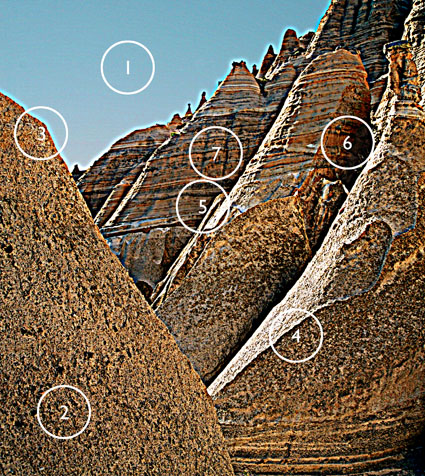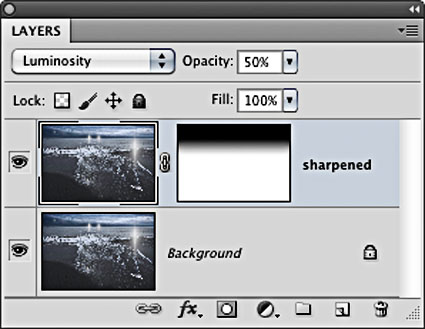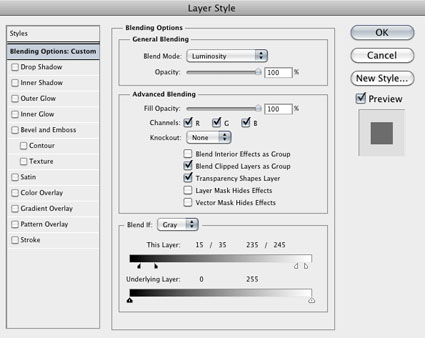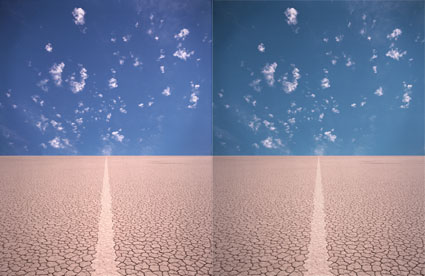Replacing Or Adding New Skies With Photoshop
Skies can make or break a landscape/seascape. Skies can dramatically alter the mood of any composition. In this video I show several variations of one composition and demonstrate how to replace an old sky or add a new sky.
Learn more in my DVD Atmospheric FX.
Photoshop CS6 Sneak Peek 4
Bryan O’Neil Hughes demonstrates Photoshop CS6’s improvements to content aware technology.
This game-changing technology just got better and easier.
Find more Photoshop CS6 Sneak Peek’s here.
7 Sharpening Artifacts To Avoid

If you know what to look for, you’ll know what path to choose and how far down it to go.
Identifying and developing a sensitivity for the artifacts digital sharpening produces will help you choose a sharpening method and what settings to use during any stage of your sharpening workflow.
You can easily see the artifacts digital sharpening produces by overdoing it.
Here are the seven most common digital sharpening artifacts.
1 Noise
2 Exaggerated Texture
3 Visible Light Halos
4 Visible Dark Lines
5 Loss of Highlight Detail
6 Loss of Shadow Detail
7 Increased Saturation
Each of these artifacts can be reduced in one or more ways.
Here’s a list of options.
Exciting Photoshop Free Brushes

Photoshop Free Brushes offers high quality Photoshop brushes.
They offer so many free brushes! Where do you start?
Try these six collections.
1 Spatter Brushes
2 Gore Brushes
3 Vintage Paper Brushes
4 Water Brushes
5 Cloud Brushes
6 Star Brushes
Find more free brushes at Naldz Graphics.
Read more on Photoshop painting techniques here.
Learn more in my digital photography and digital printing workshops.
Sharpening With Layers



There are many reasons to use layers when sharpening your digital images.
Layers can be used to eliminate saturation shifts. Change the Blend Mode of a sharpening layer from Normal to Luminosity. Color noise will be reduced this way.
Should I Use Lightroom Or Bridge ? – Julianne Kost
In this episode of the Complete Picture, Julieanne Kost helps you decide which application is right for your workflow by explaining the differences between Lightroom and Bridge for managing images and assets.
View more Lightroom videos here.
Learn more in my digital photography and digital printing workshops.
Lightroom and Photoshop Seamless Integration – Julianne Kost
Find out how Adobe Photoshop and Adobe Photoshop Lightroom work best together. This session reveals the most efficient way to move back and forth between these powerful applications, whether you’re editing a single image or an entire shoot. You’ll learn how to take advantage of export options, presets, publish services, Smart Objects, droplets, and more to automate your workflow and increase your productivity.
View more Lightroom videos here.
Learn more in my digital photography and digital printing workshops.
Hidden Gems In Photoshop CS5 – Bryan O'Neil Hughes
Join Photoshop Product Manager Bryan O’Neil Hughes for a deep dive into the hidden gems of Adobe Photoshop CS5 and Photoshop CS5 Extended, including tips, tricks, and technologies that are sure to help boost your productivity. Discover how to go places creatively that were impossible in Photoshop before CS5. Hughes will reveal many new techniques and enhancements to help keep your skills sharp and current.
View more Photoshop videos here.
Learn more in my digital photography and digital printing workshops.
Softproofing

As a rule, always softproof an image to determine a rendering intent and make printer/substrate specific adjustments to a image file before printing it.
You can get Photoshop to display an image the way it will appear when it’s printed, before you print it, by softproofing an image. If you softproof before you print, you’ll get your best first proof or maybe even a finished print. Not to be confused with a hard proof or physically printed piece, a softproof uses an ICC profile to create an onscreen simulation of an image as it will appear when printed.
Wait. Haven’t you already done this by calibrating and characterizing your monitor with a colorimeter, choosing an editing space along with color management policies in Photoshop, and specifying the right profile for a printer/paper combination with your printer driver? Almost. Doing these things ensures that all of the different color behaviors of the devices you’re using are accurately described and that color conversions are handled precisely, but it doesn’t ensure that you will see exactly how an image will look when printed. Without softproofing, you see how an image looks on a monitor. To see an image on a monitor with the appearance of how it will look when printed, before you print it, you need to take the final step of softproofing the image. This simulation won’t change your file, just it’s appearance. Once softproofed, if you choose to, you can make output specific adjustments to your file before printing to get a better first print. Read More

